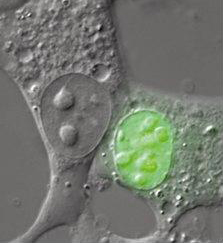Source: www.cancer.gov/ncicancerbulletin
Author: Carmen Phillips
An 8-year trial conducted in India has shown that screening for cervical cancer with a single round of human papillomavirus (HPV) DNA testing halved the rate of advanced cervical cancers and deaths from cervical cancer. HPV screening was much more effective than other screening methods, including Pap testing or visual inspection with acetic acid. In the study, published April 2 in the New England Journal of Medicine (NEJM), no women who had a negative HPV DNA test died from invasive cervical cancer after 8 years of follow up.
The findings have “immediate and global” implications, wrote Drs. Mark Schiffman and Sholom Wacholder of NCI’s Division of Cancer Epidemiology and Genetics in an editorial accompanying the study. “International experts in cervical-cancer prevention should now adapt HPV testing for widespread implementation,” they added, noting that additional research and efforts will be required in some communities, including the development of an infrastructure for the treatment of HPV-positive women.
HPV16 E6 shown in green, in the
nucleus of a mammalian cell
In developing countries like India, noted the study’s lead author, Dr. Rengaswamy Sankaranarayanan and colleagues from the International Agency for Research on Cancer (IARC) in France, there has been “no clinically significant reduction in cervical cancer incidence in three decades.” As a result, approximately 80 percent of the half million cases of cervical cancer diagnosed around the globe each year are in low-resource countries.
Cervical cancer screening programs in the United States and other developed countries are one of biggest success stories in cancer prevention and early detection, explained Dr. Debbie Saslow, director of Breast and Gynecologic Cancers at the American Cancer Society.
“In the developing world, where they don’t have screening and have little to no access to the HPV vaccine, this is the kind of data we’ve been waiting for,” she said.
The study included more than 130,000 women aged 30 to 59 from more than 50 villages in northern India. The villages were randomized to one of four screening “clusters”: A single round of HPV testing, cytologic testing, visual inspection, or routine care. In India, routine care rarely includes screening. In fact, only 8 participants in the trial had undergone some type of cervical cancer screening prior to enrollment. In this study, however, women in the routine care arm were given information on where to obtain cervical cancer screening.
At 8 years follow up, compared with the control group, HPV testing was associated with a 53 percent reduction in advanced cervical cancer diagnoses and a 47 percent reduction in cervical cancer deaths. By comparison, Pap smear was associated with 25 percent and 11 percent reductions, respectively.
“We found that HPV testing was the most objective and reproducible of all cervical screening tests and was less demanding in terms of training and quality assurance,” the study authors wrote. Although the cost of the HPV test used in the study could be prohibitive in low-resource settings, a much cheaper HPV DNA test, designed for public health use and recently shown to be equally effective, is moving closer to availability in low-resource regions. As a result, the authors noted, HPV DNA testing could be a viable and appropriate “primary screening approach in low-resource settings for women who are at least 30 years of age.”
Studies have shown that screening with the HPV DNA test should not begin earlier because HPV infections in younger women who are sexually active are extremely common but typically resolve on their own. By age 30, however, positive HPV tests are more likely to be picking up persistent infections with the types of HPV shown to induce the changes that lead to cervical cancer, including types 16 and 18, which are responsible for 70 percent of all cervical cancers.
Dr. Schiffman and Dr. Wacholder highlighted some points of caution. In this particular study, for instance, the screening program based on HPV DNA testing worked because only 10 percent of women tested HPV-positive. For unknown reasons, HPV prevalence is more than 20 percent in some low-resource regions, something NCI, IARC, and others are investigating. “At this prevalence level, too many women must undergo triage or treatment for a screening program to be practical without a more specific assay,” they wrote.
Even so, said Dr. Saslow, from a scientific standpoint, “these barriers are surmountable.” What is less predictable and perhaps more problematic, she stressed, are the political, economic, and cultural factors.
“These are often countries where safe drinking water is scarce, where even something like a dollar per [HPV] test might not be doable,” she said. “It may often come down to what the priorities are. Because this is a women’s health issue, it gets less priority in some countries than it would if it were a men’s health issue.”
In 2007, Digene, the company that developed the HPV test used in this trial, Hybrid Capture 2, as well as the newer, inexpensive test called careHPV, was acquired by Qiagen, a provider of sample and assay technology. The careHPV test was developed in part with support from the global health organization Program for Appropriate Technology in Health, with funding from the Bill and Melinda Gates Foundation, specifically for use in low-resource countries. The test has its own water supply, can be conducted on portable equipment, will run on batteries, and can produce results in less than 3 hours.
Qiagen announced on April 1 that over the next 5 years it will donate one million HPV tests for use in screening programs in low-resource countries.
—


Leave A Comment
You must be logged in to post a comment.